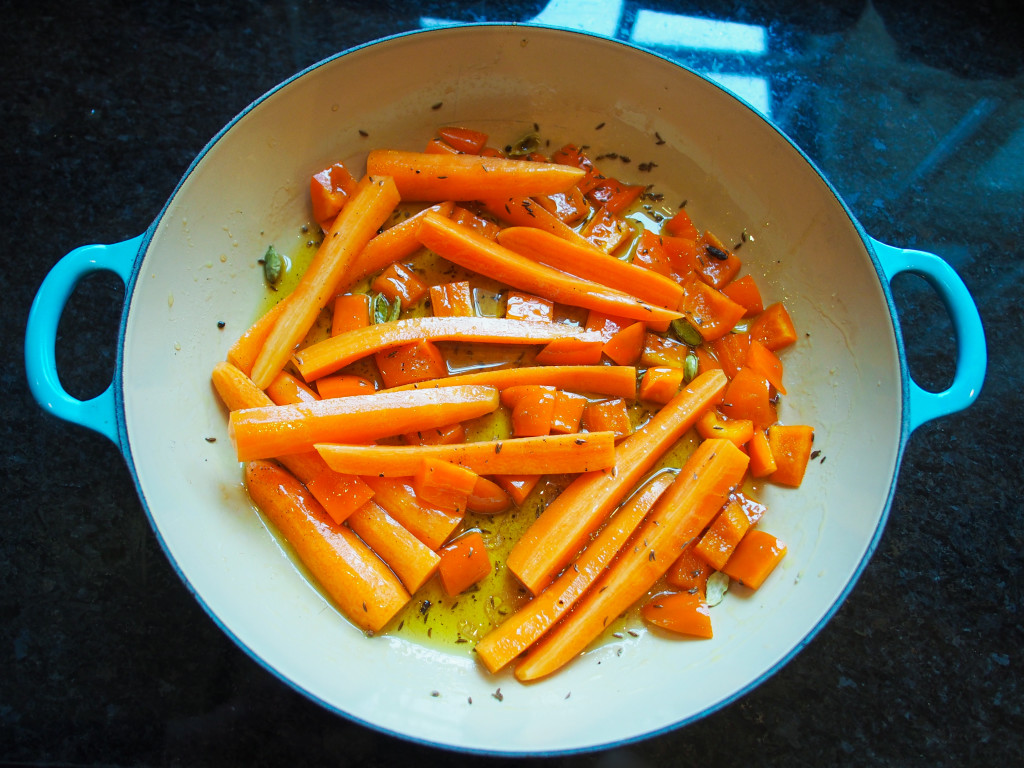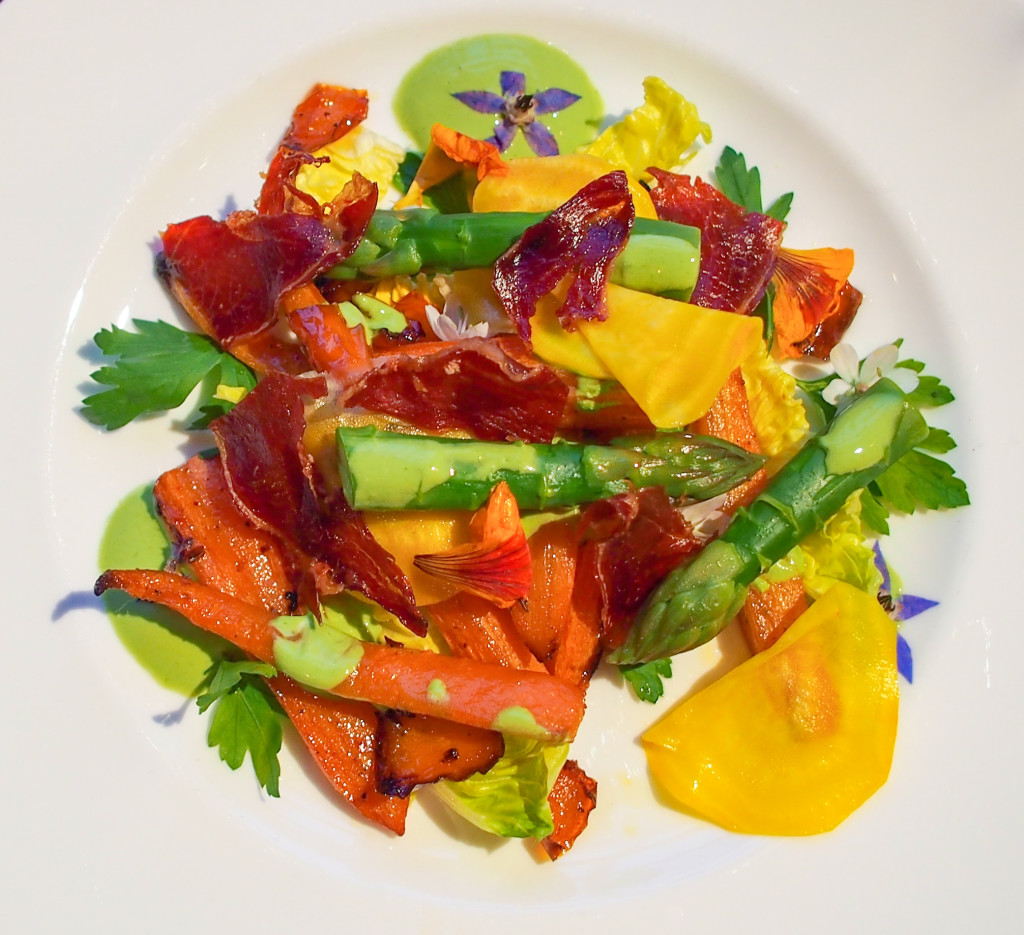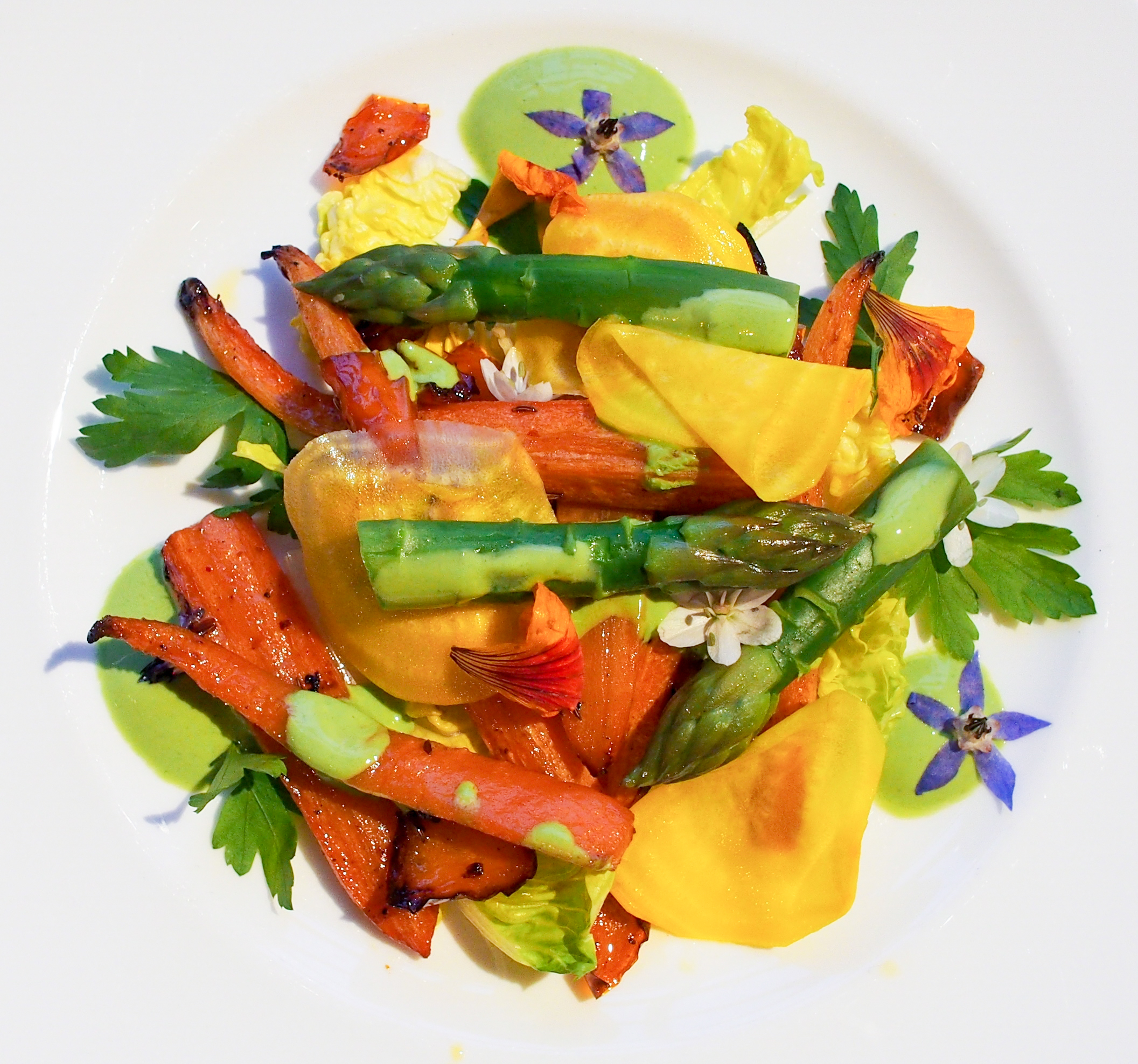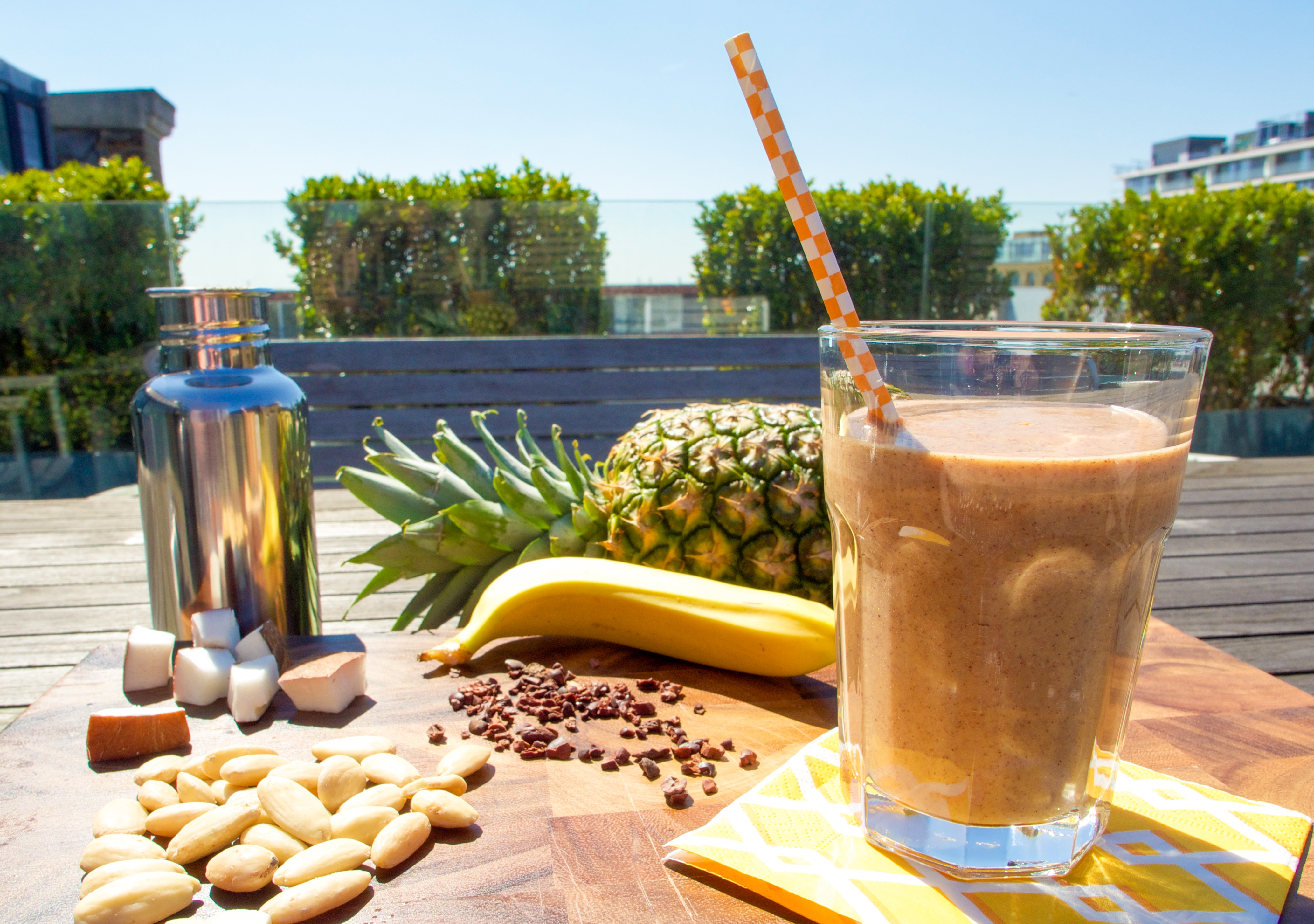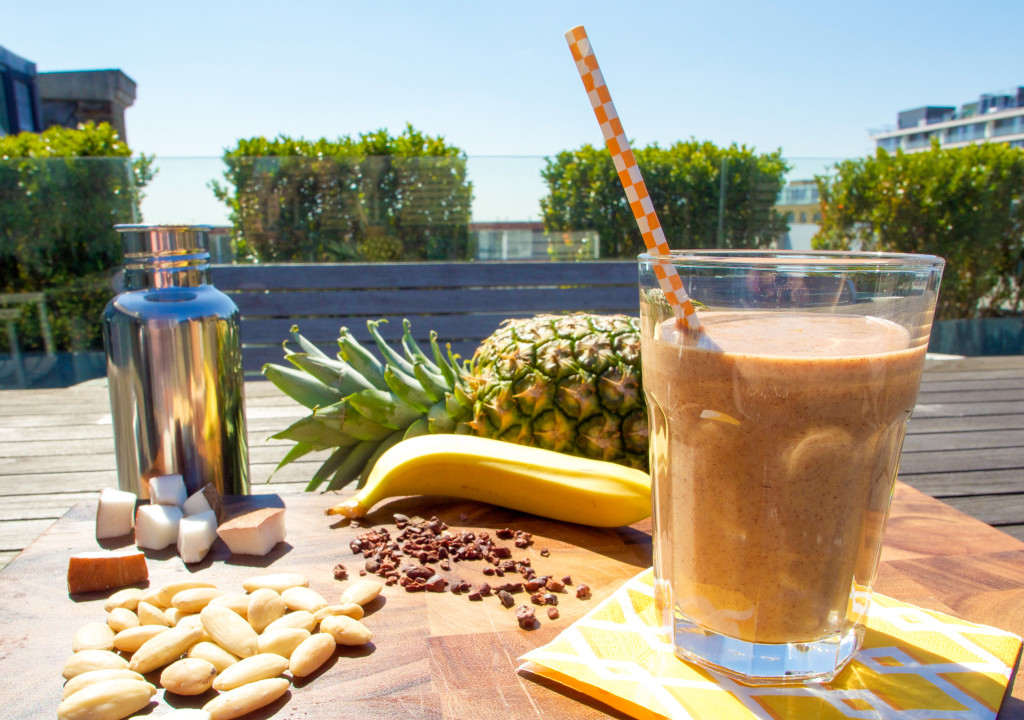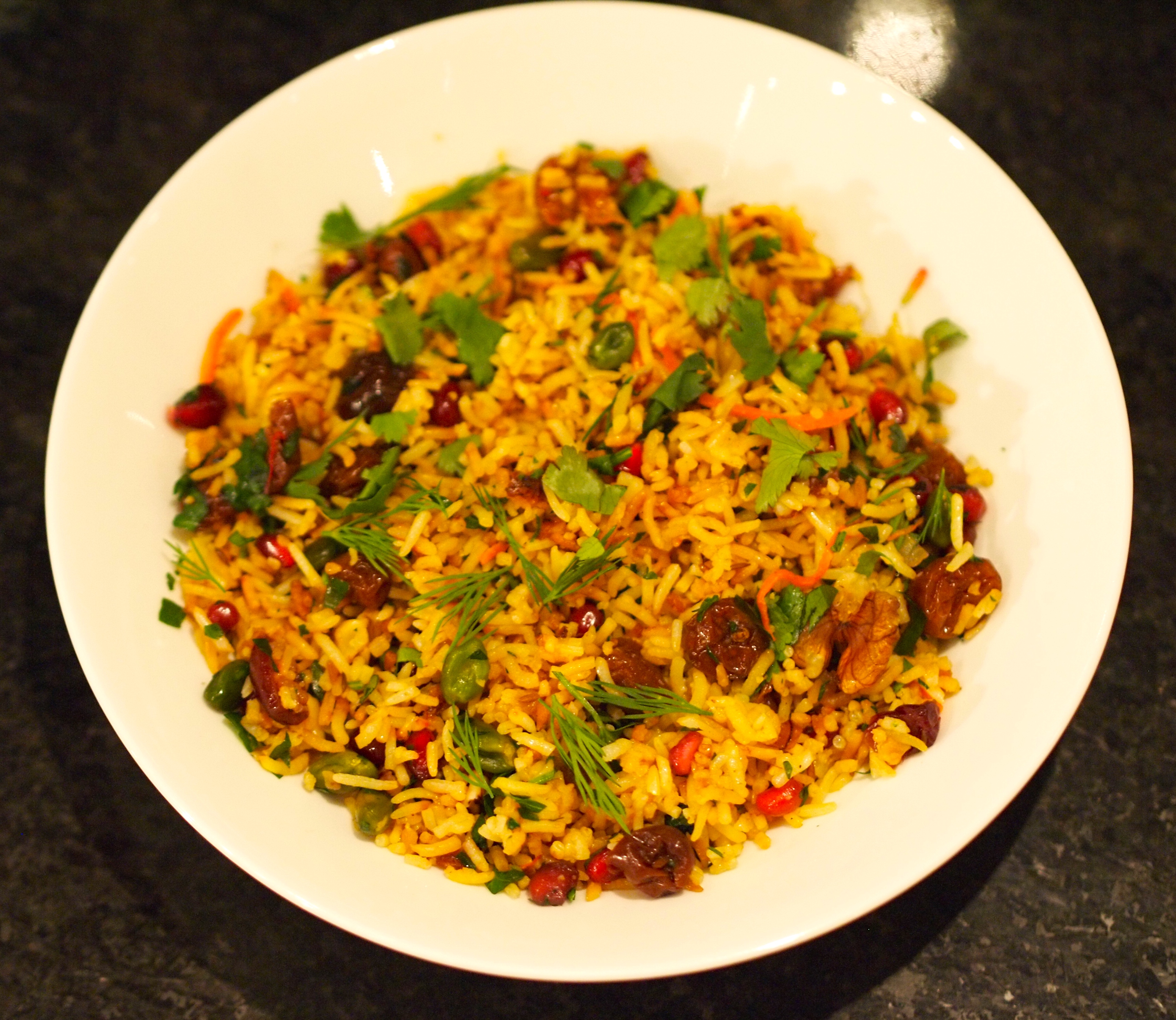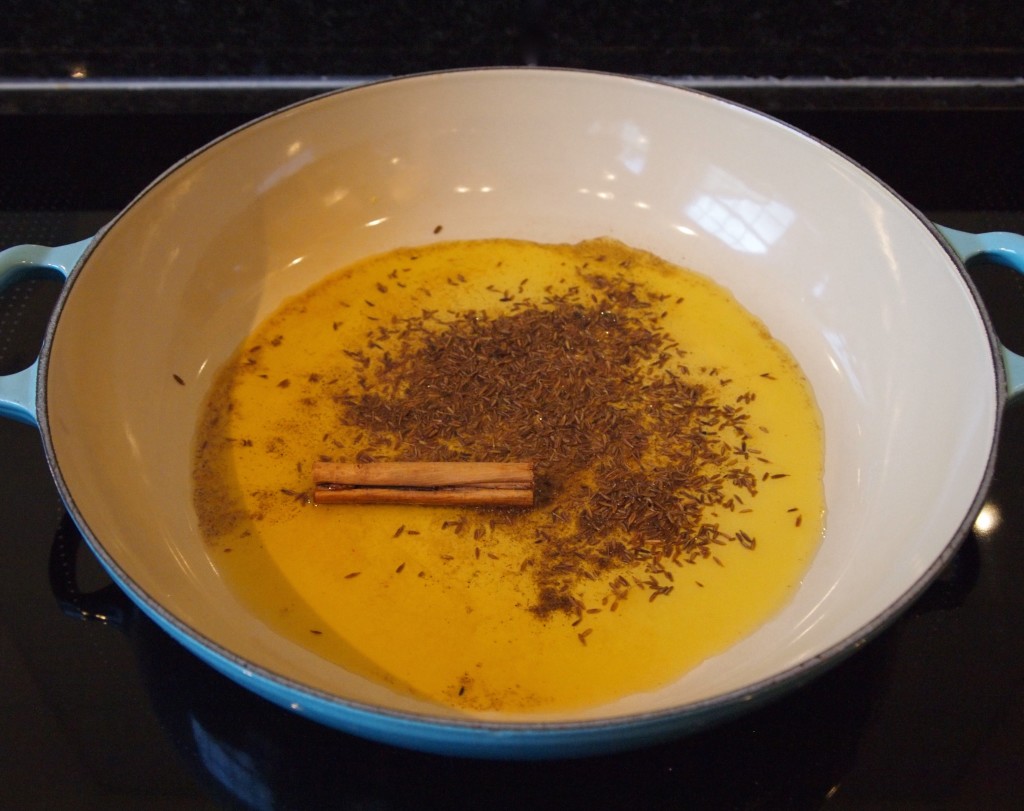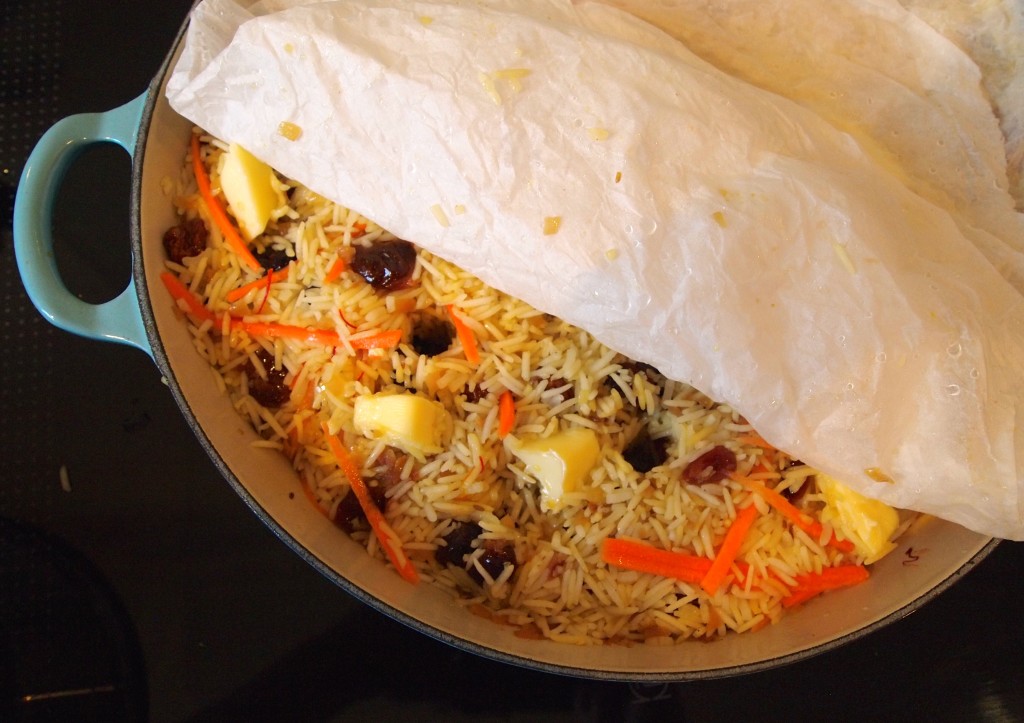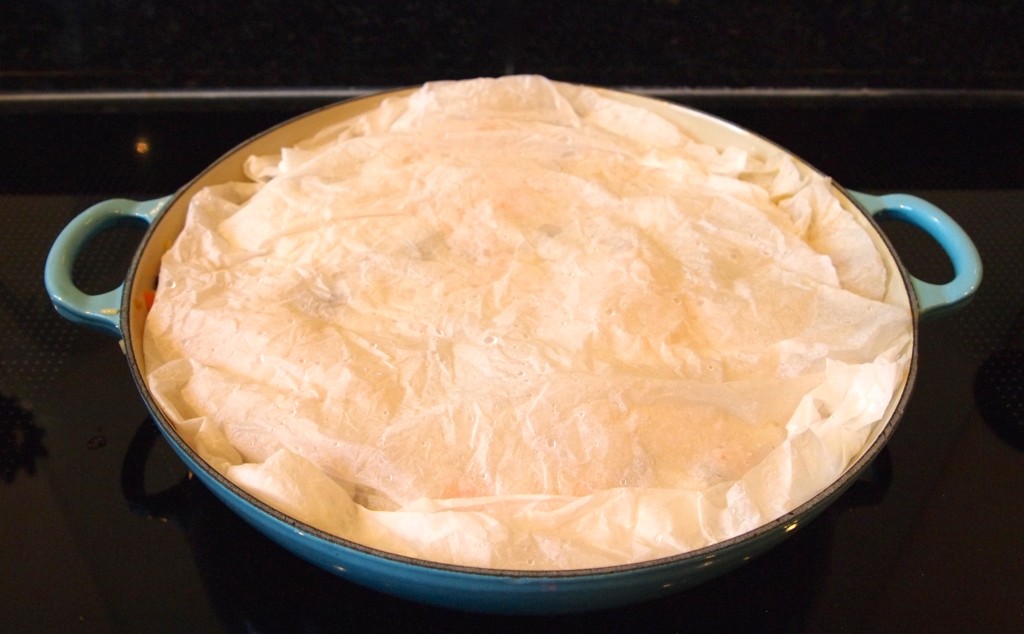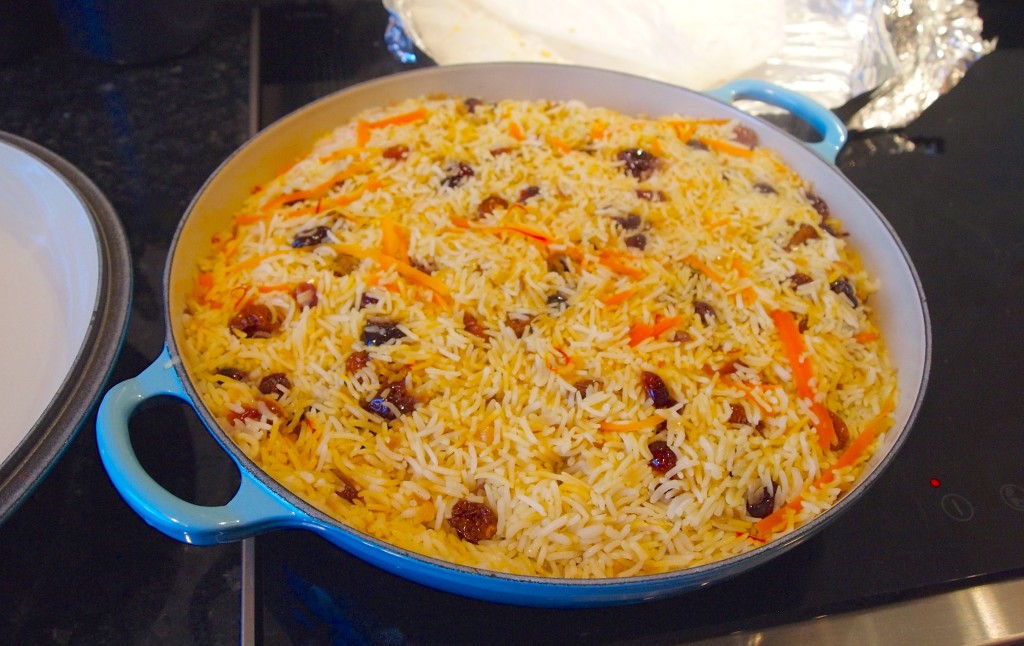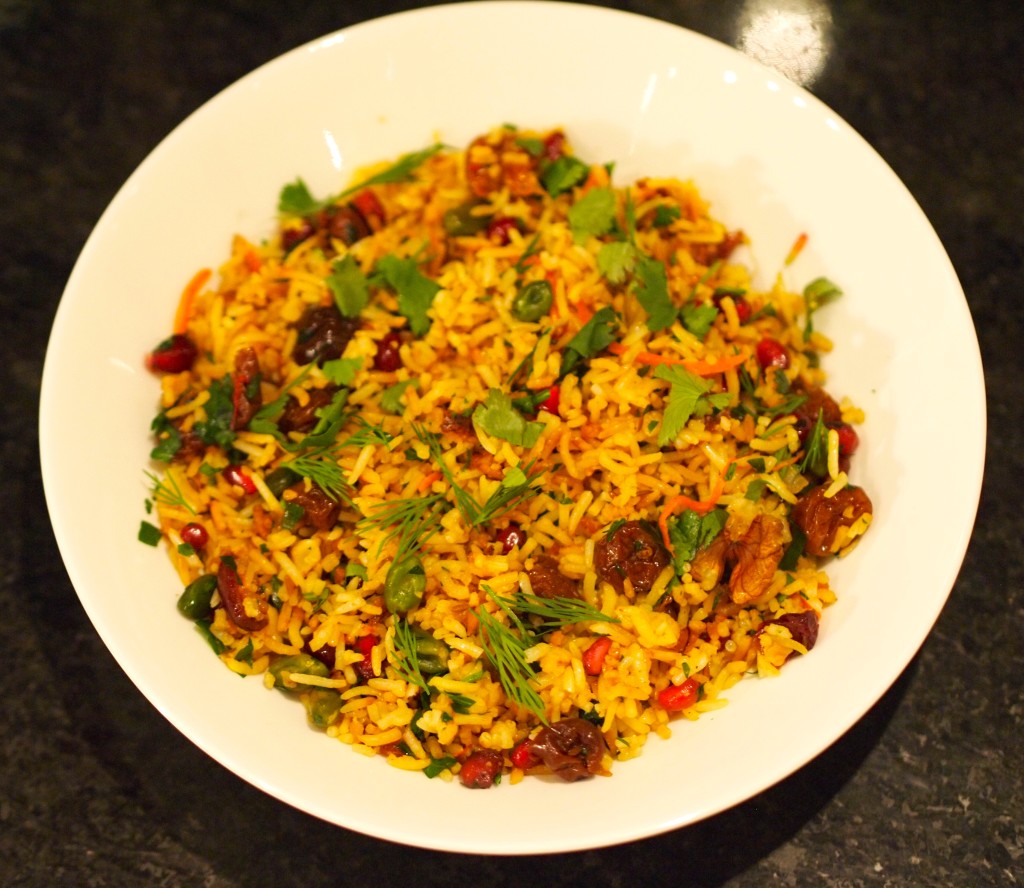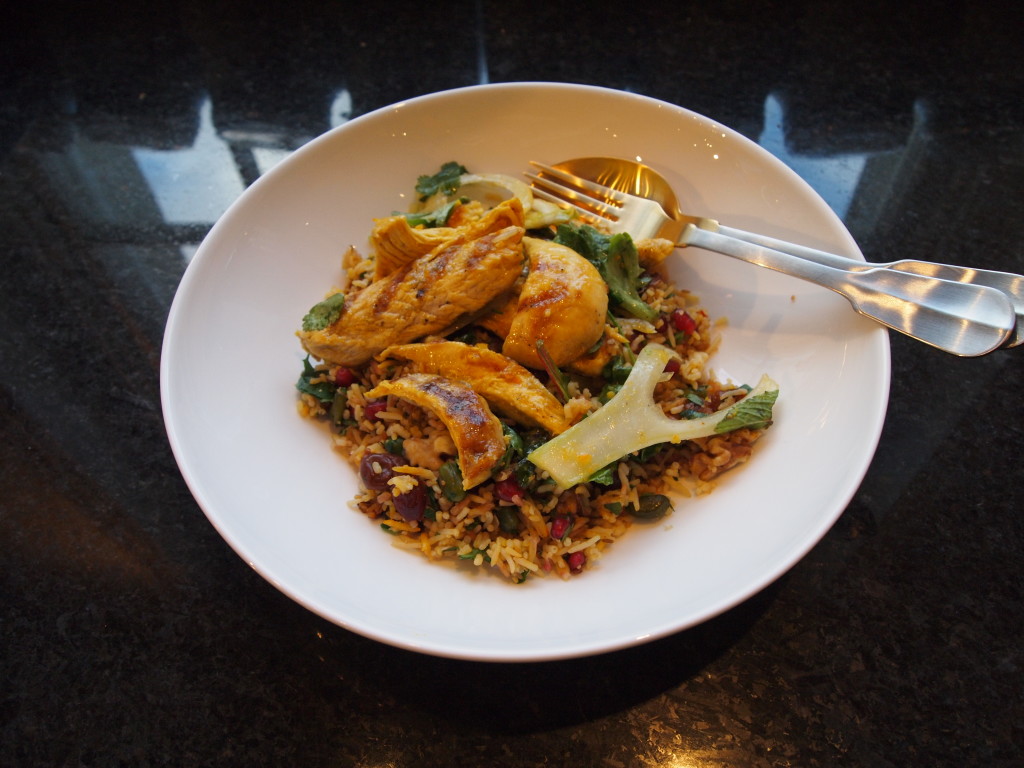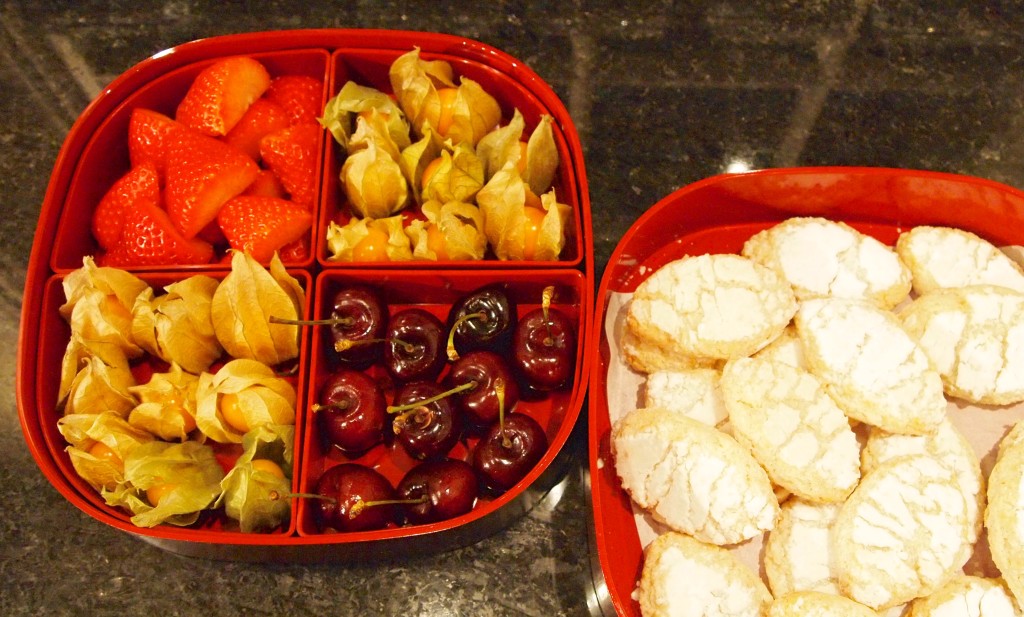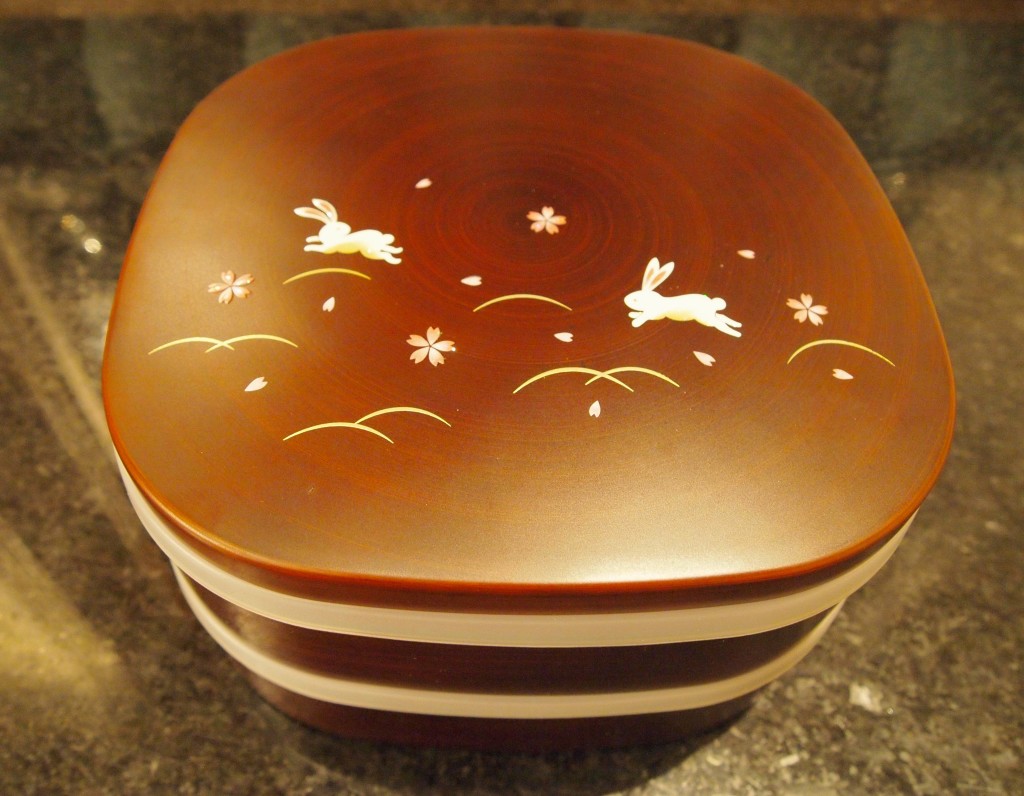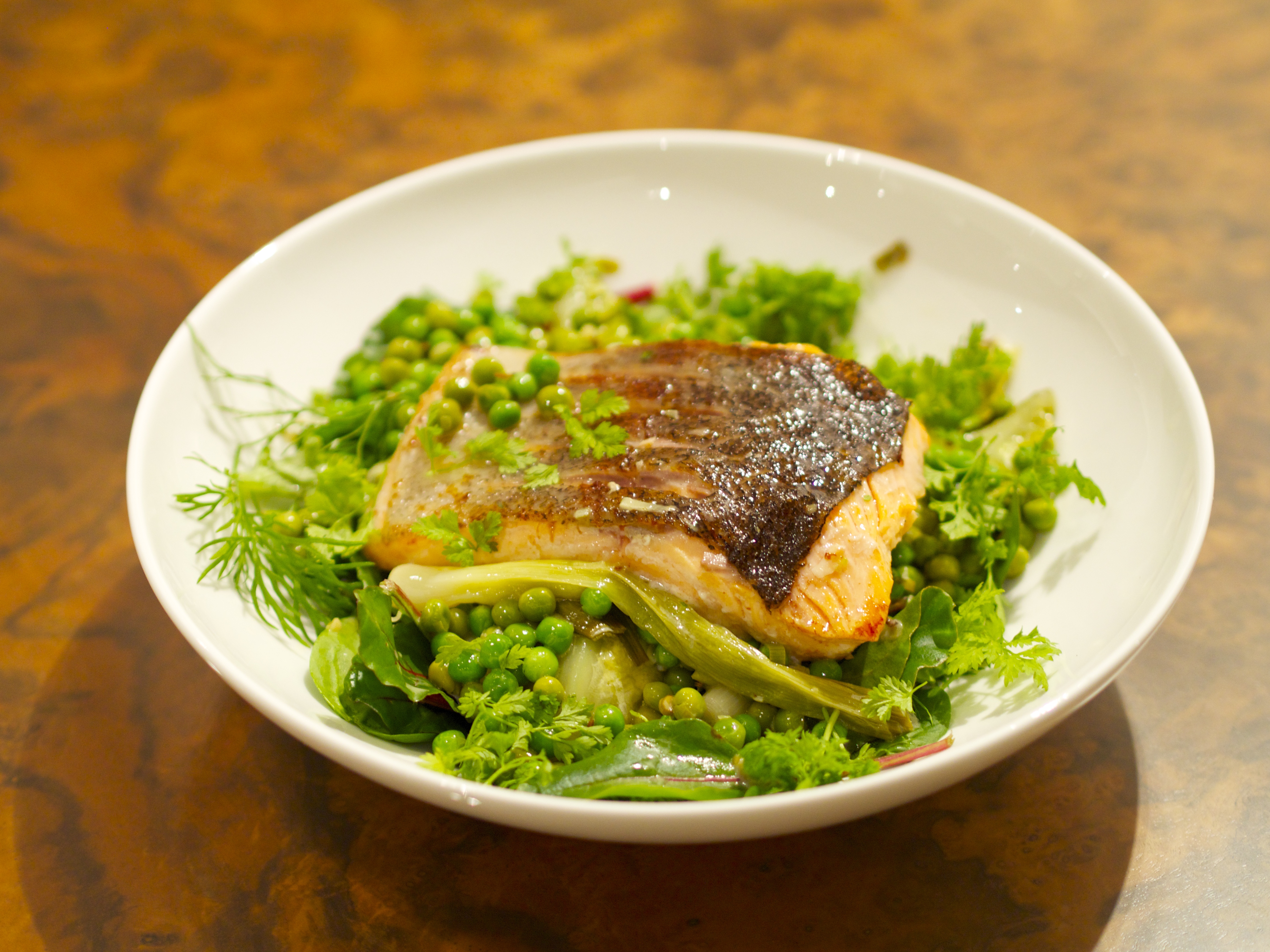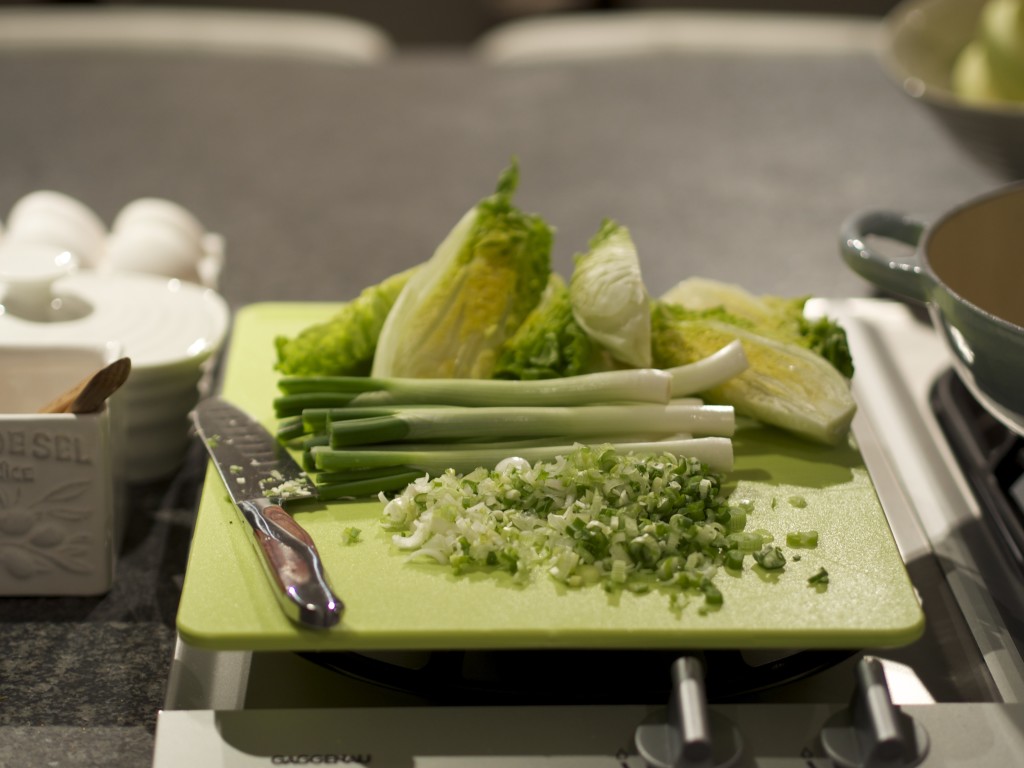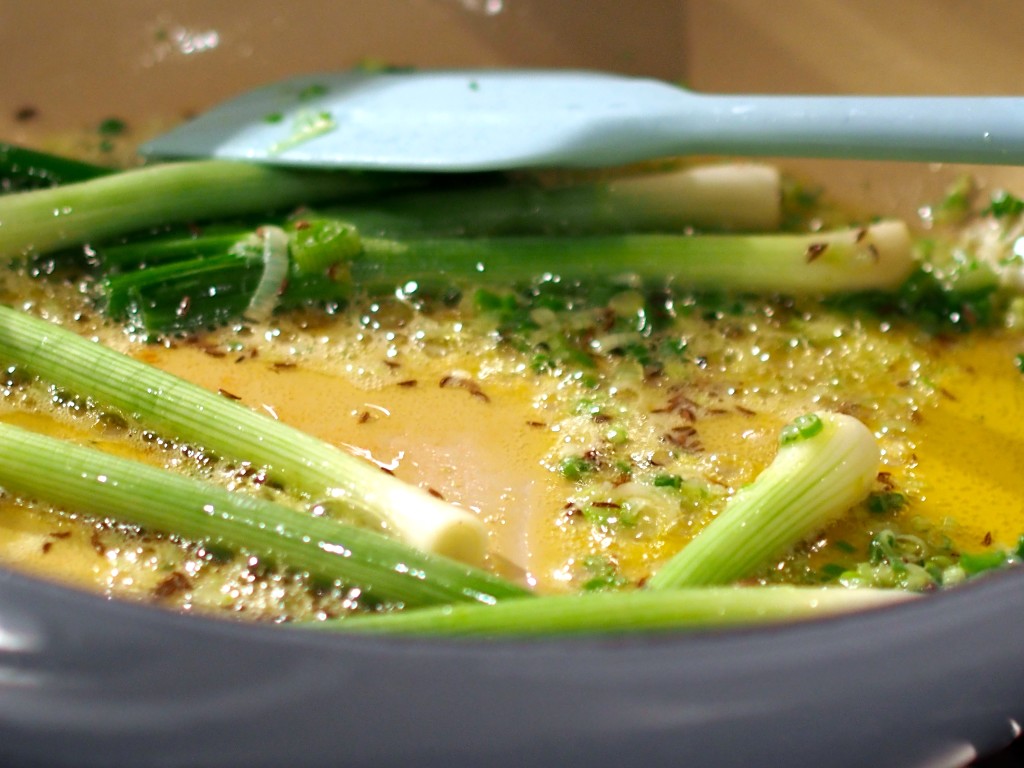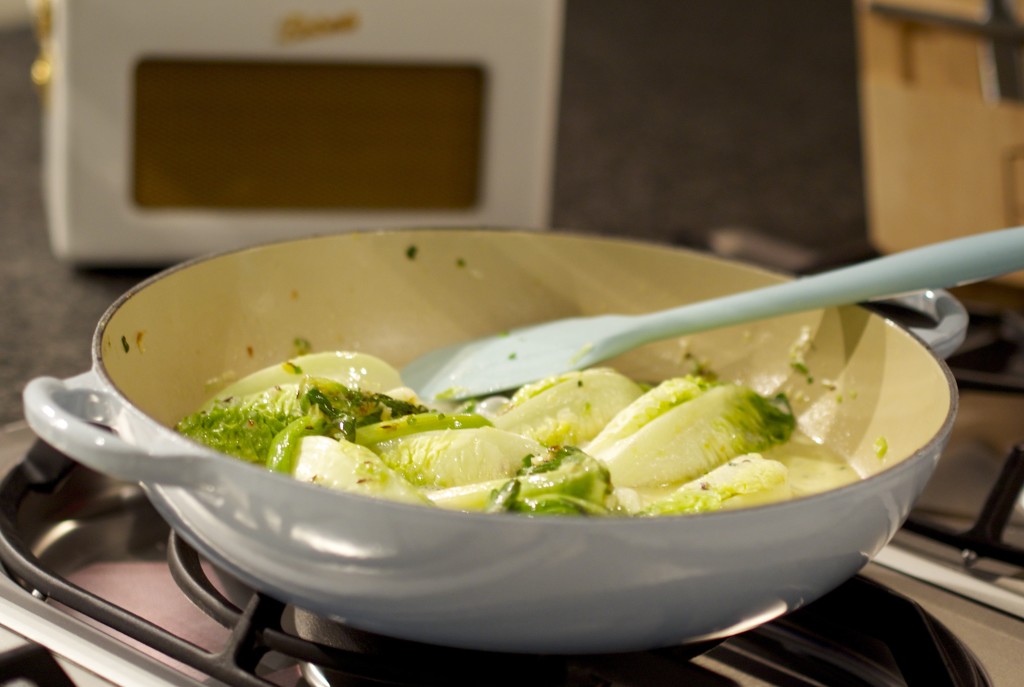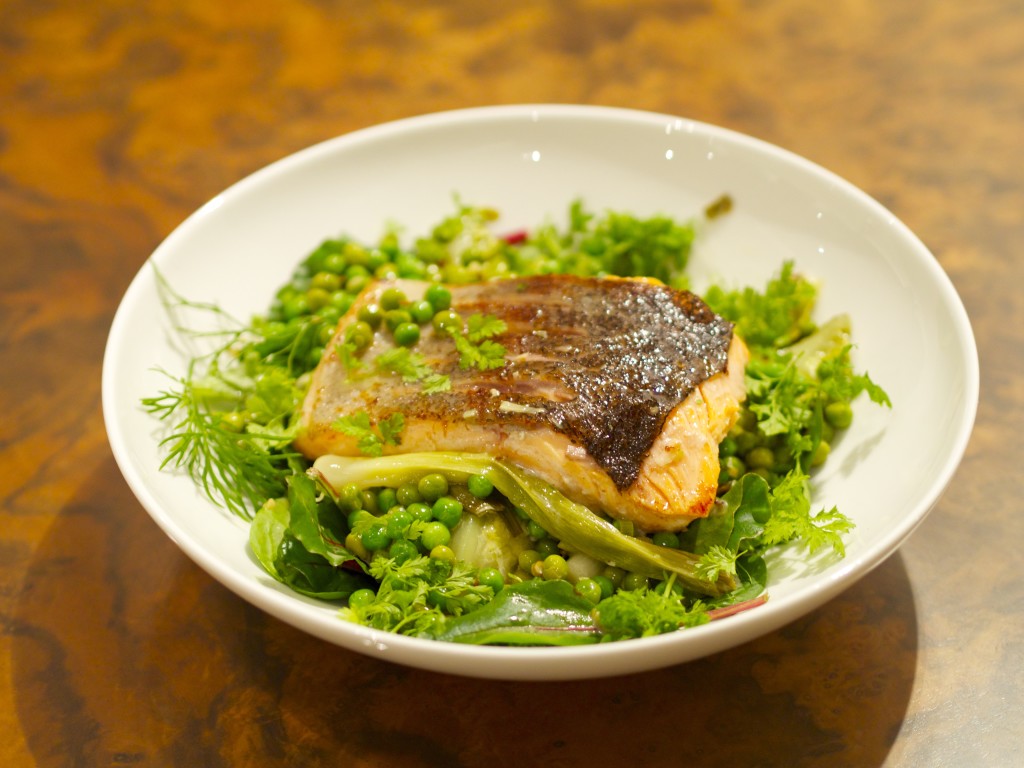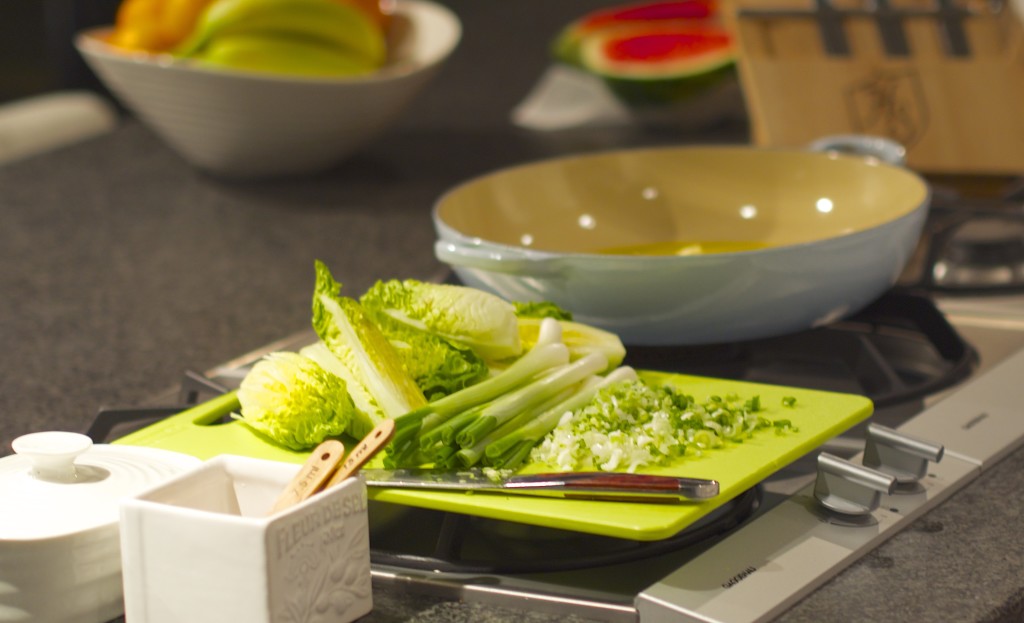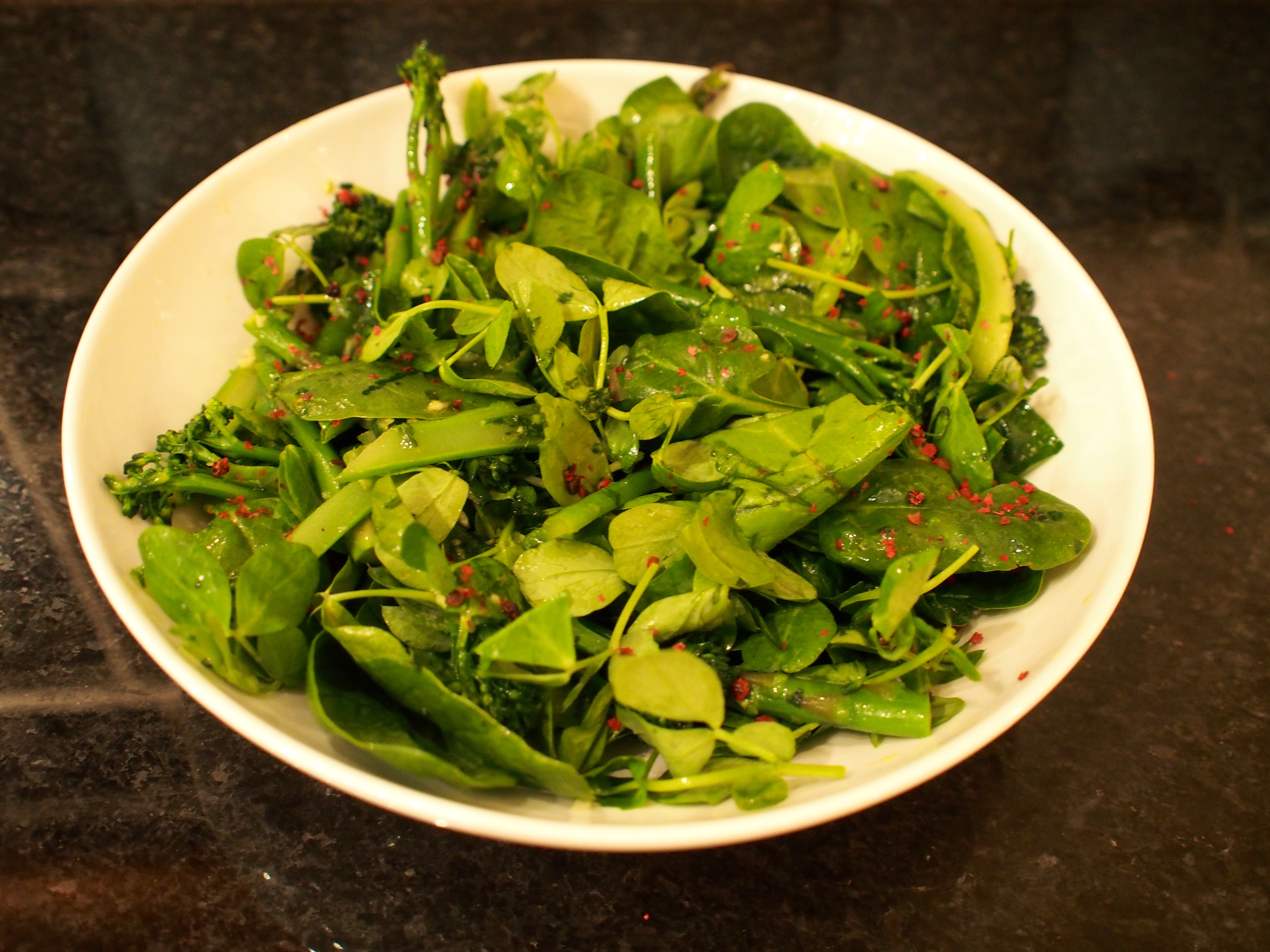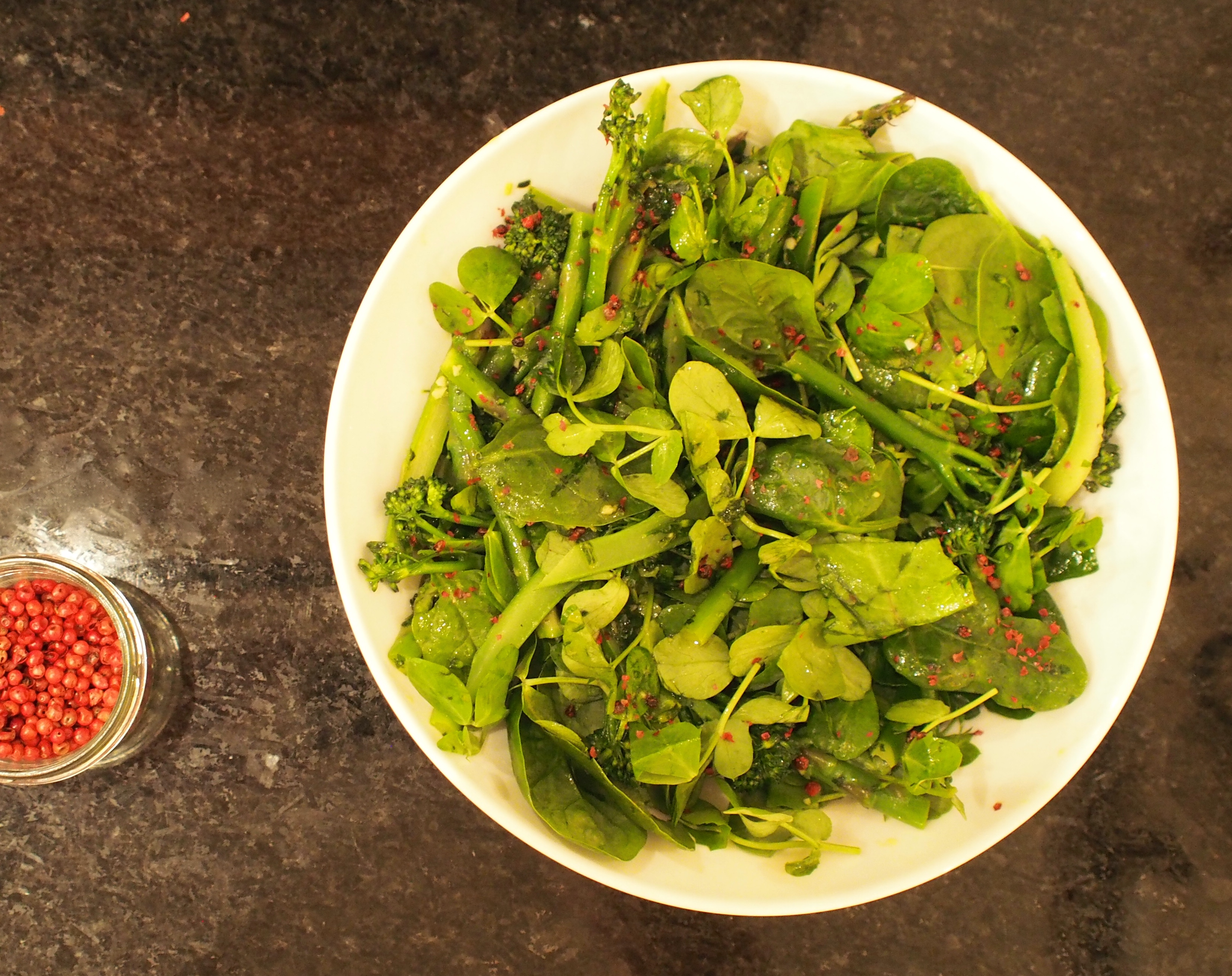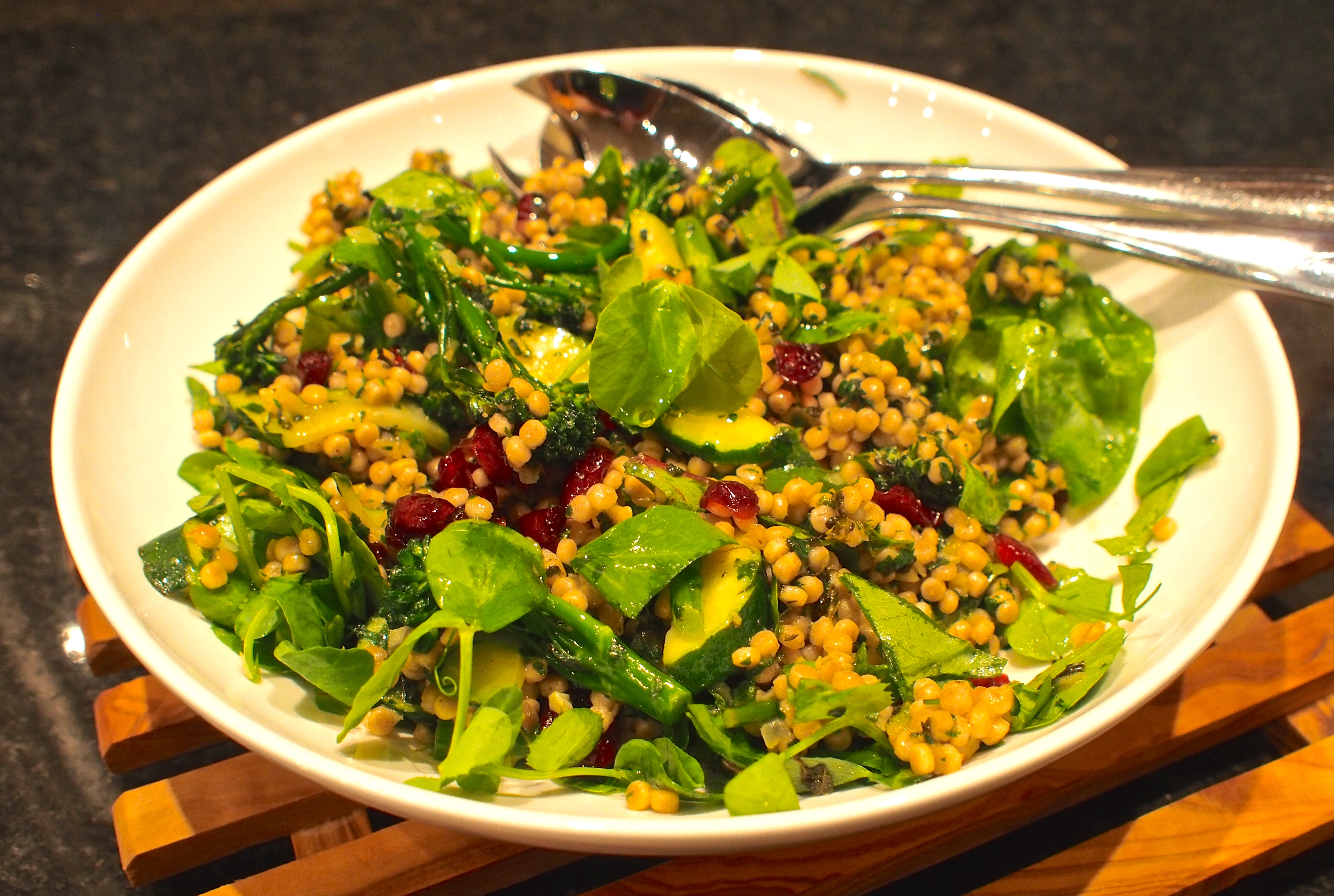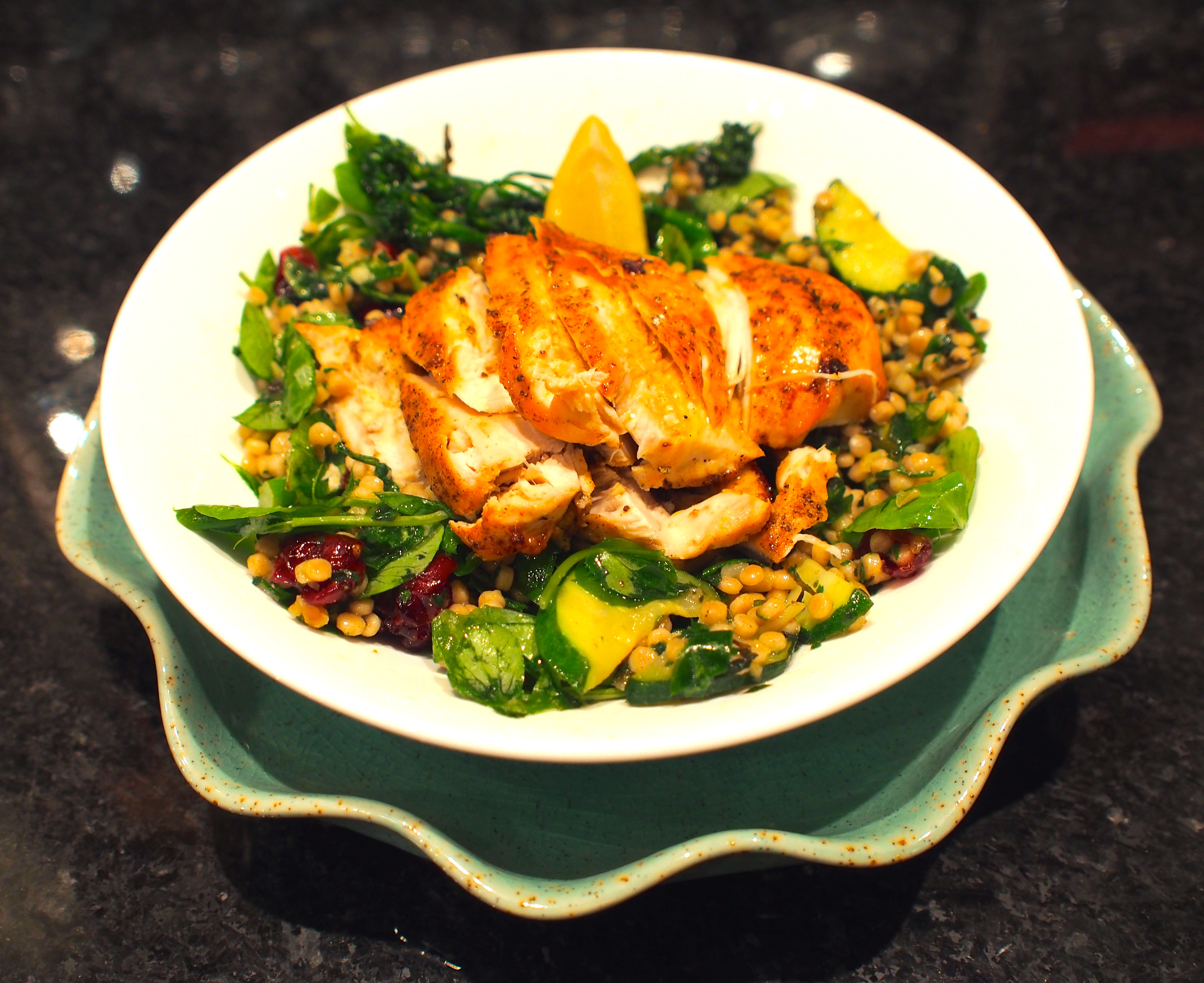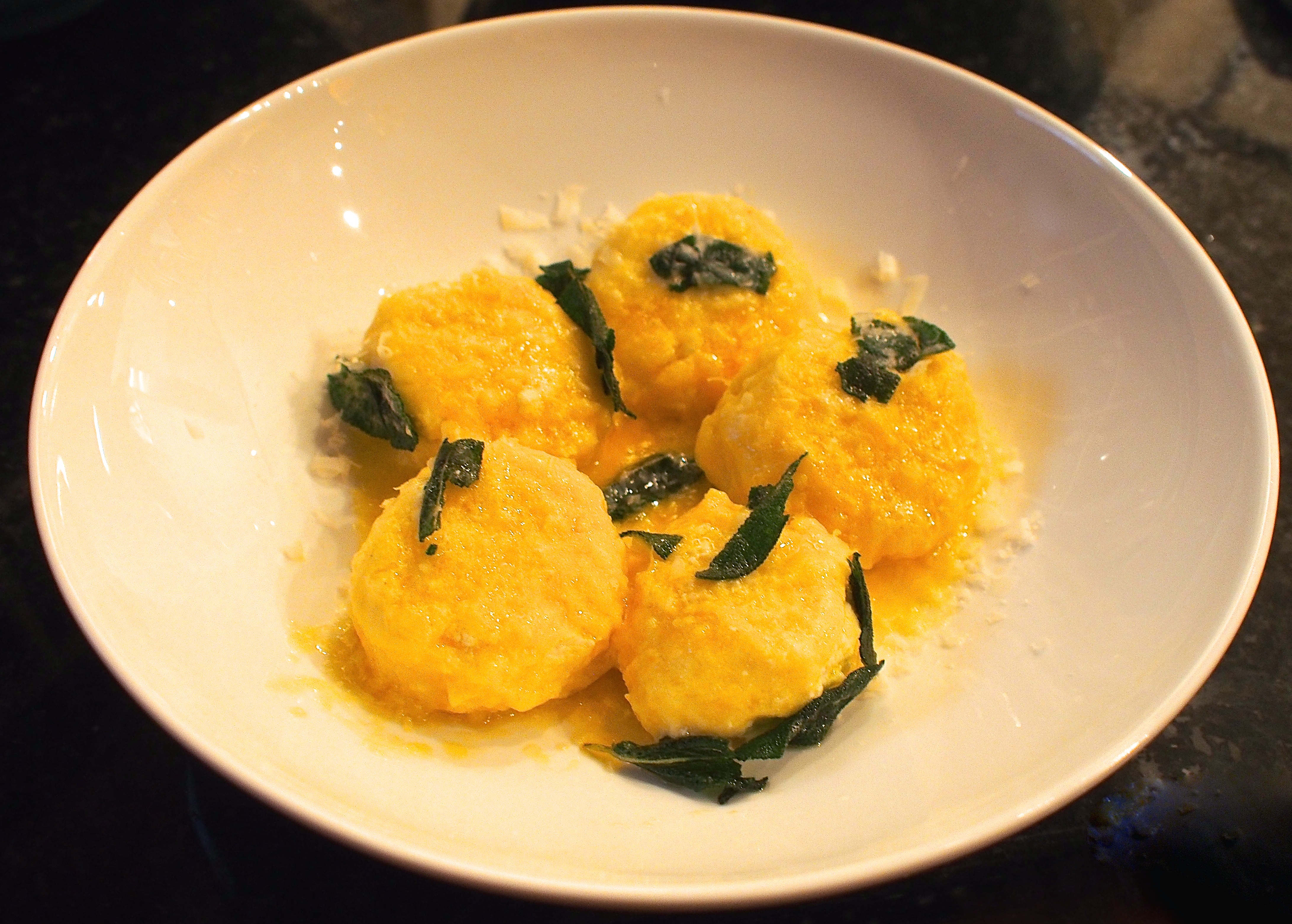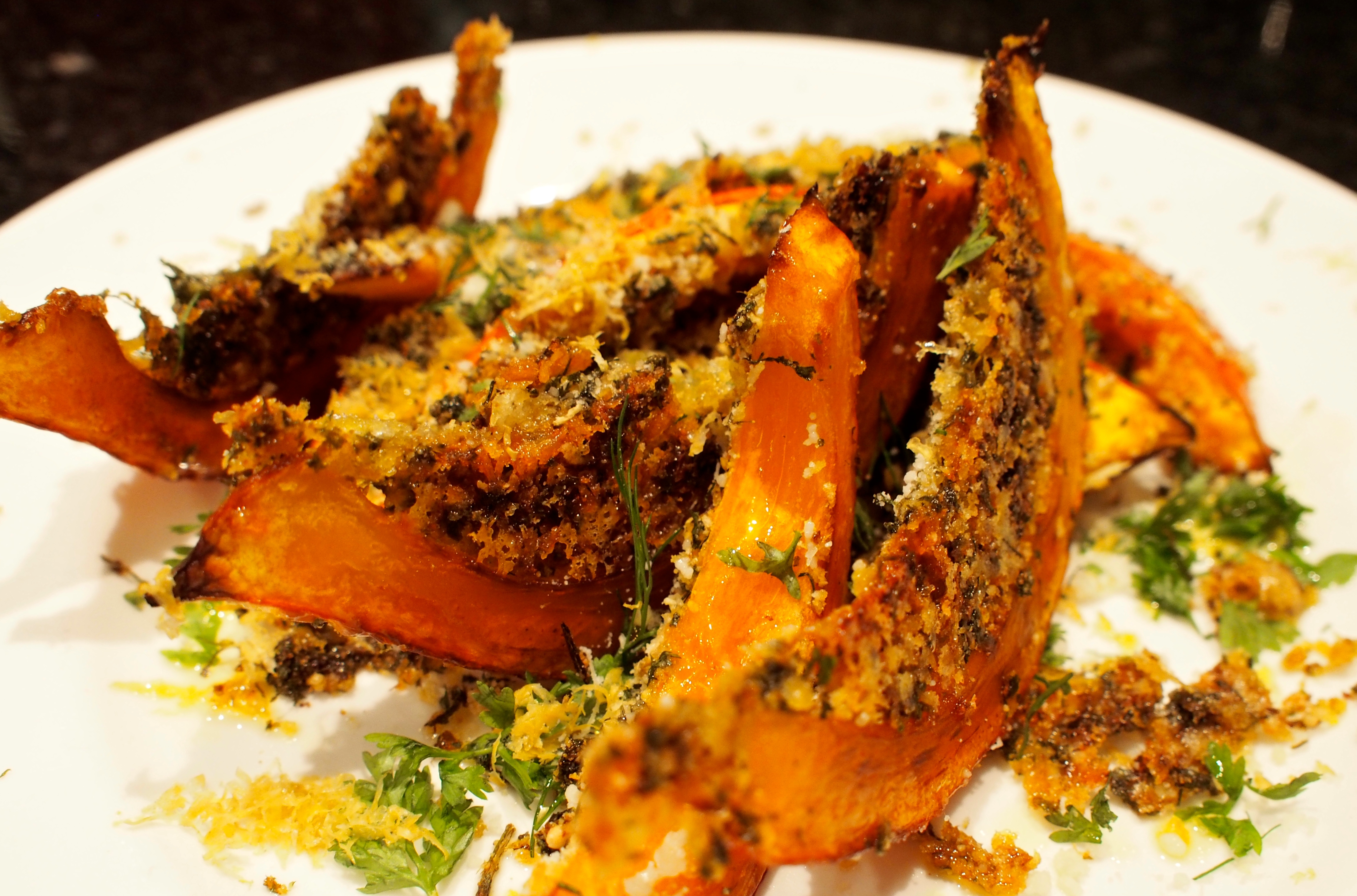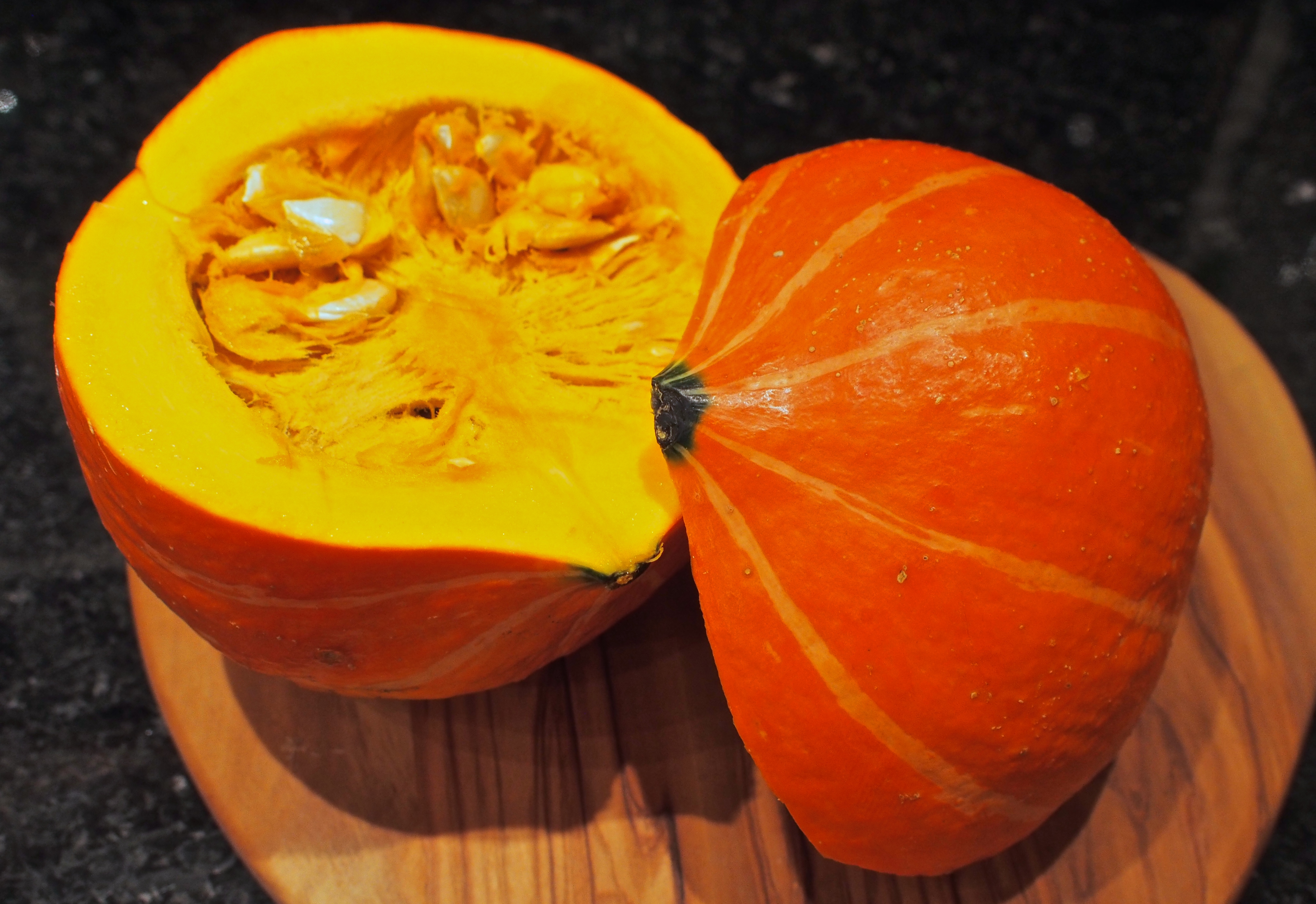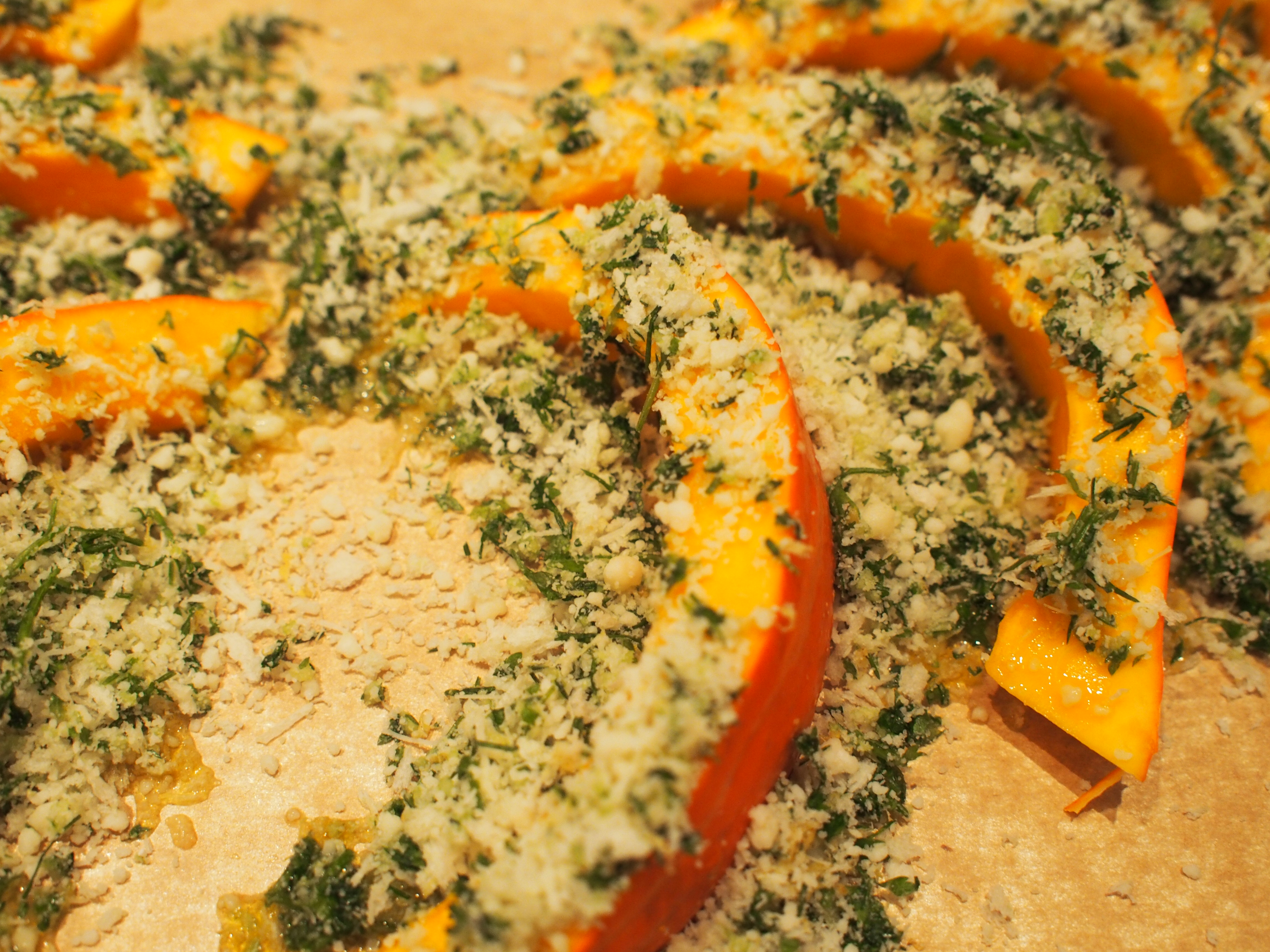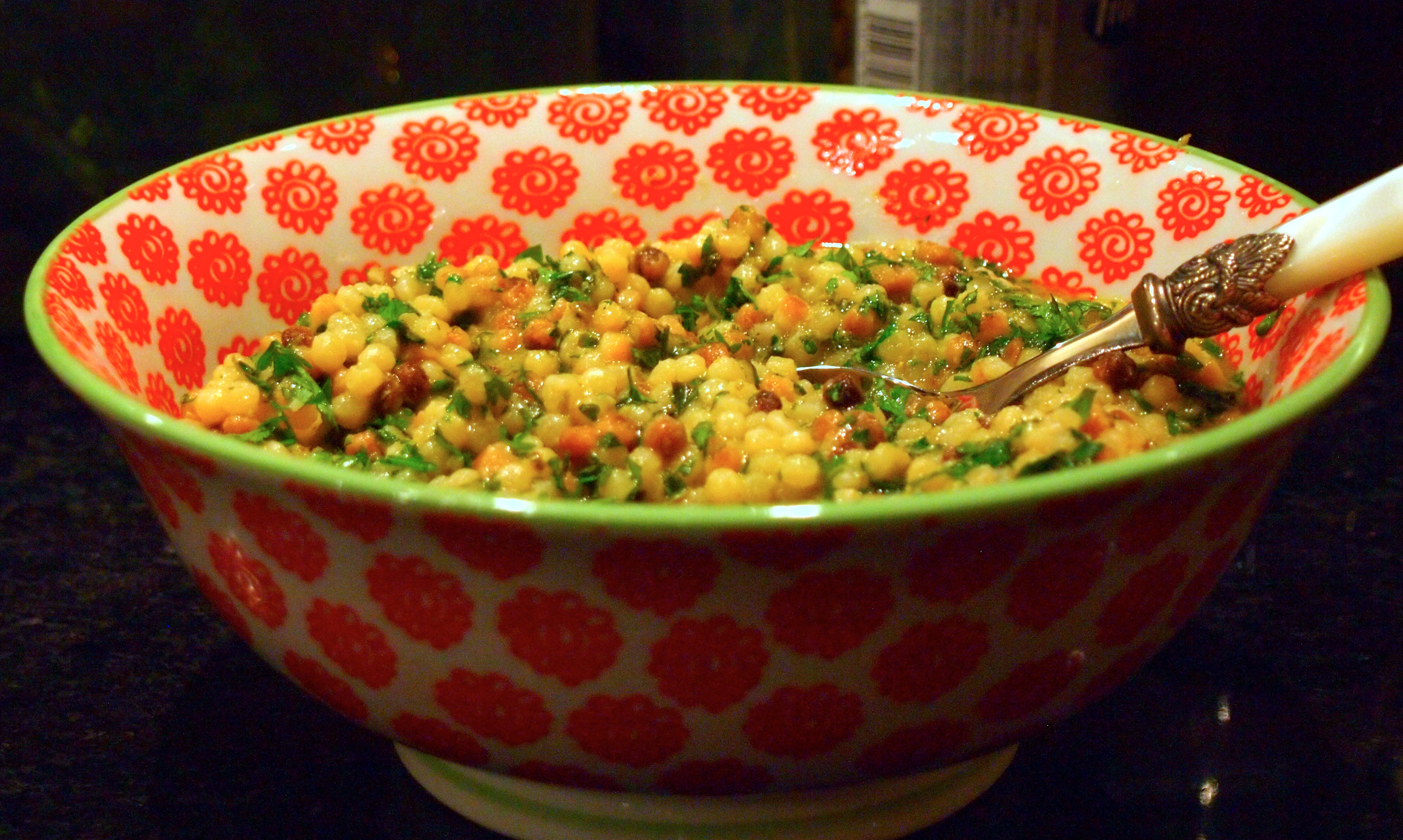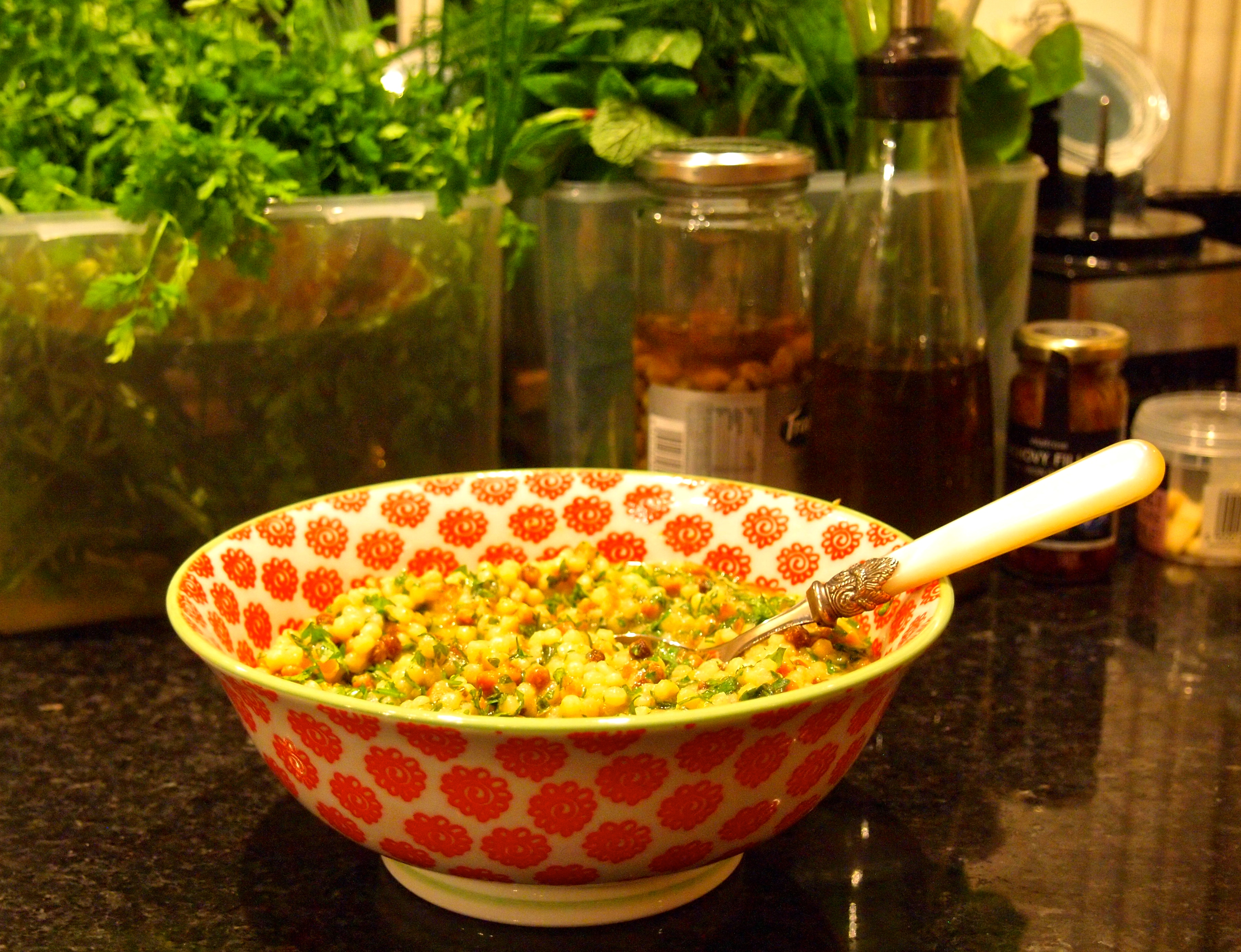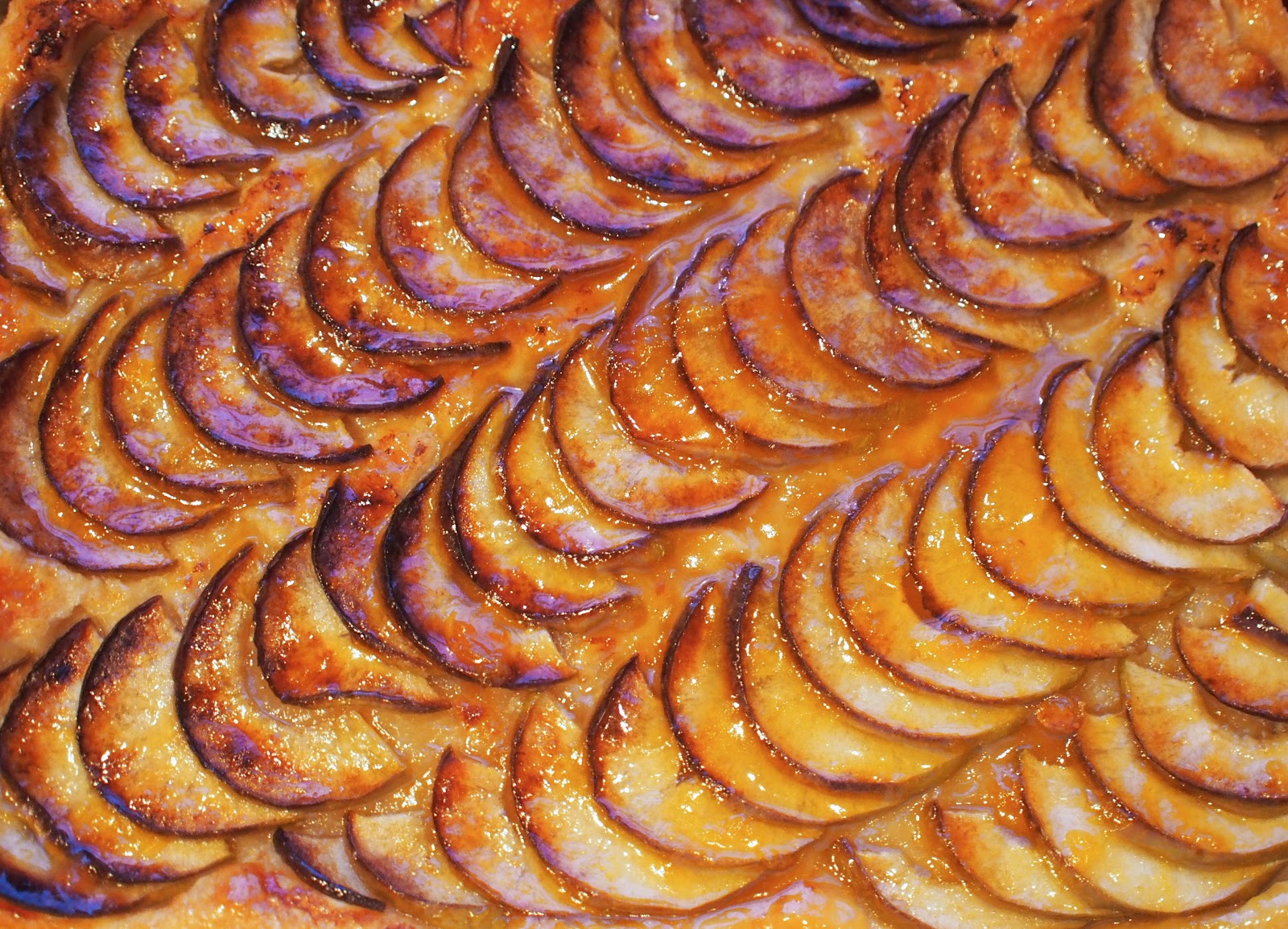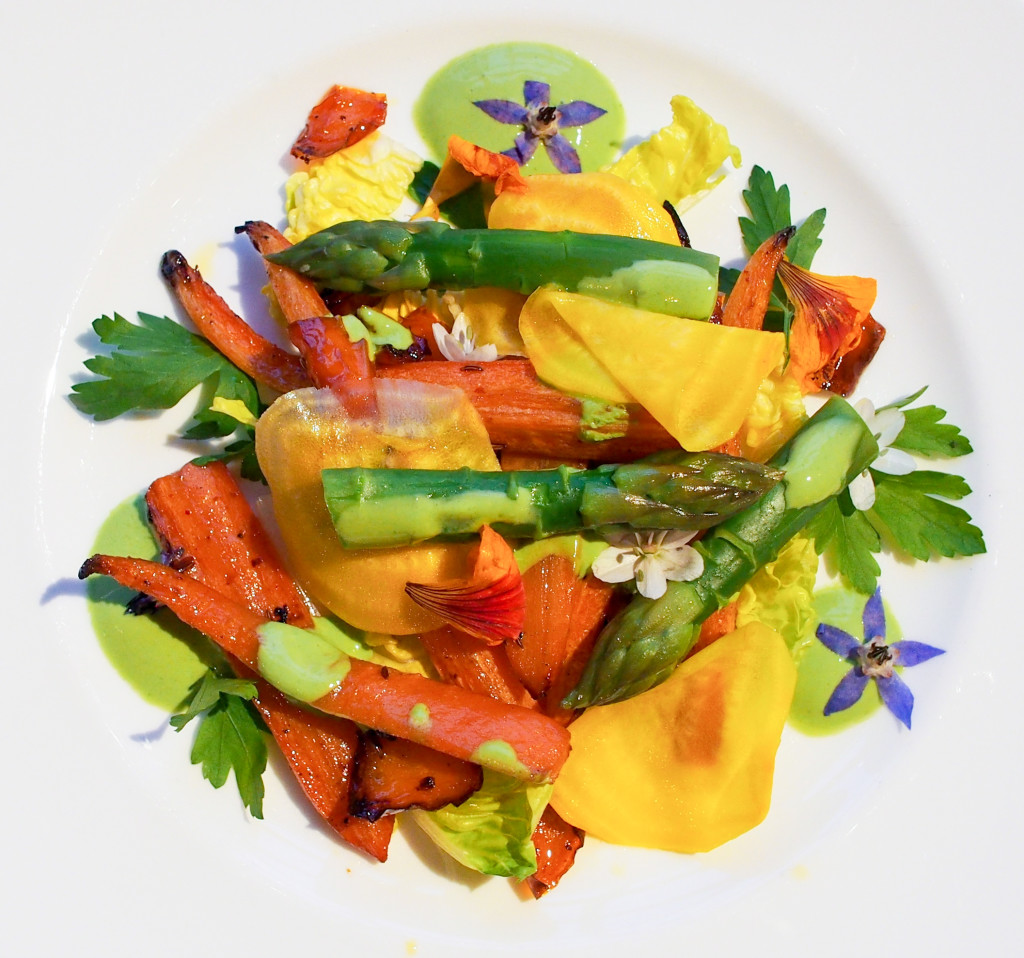
I think we’re all trying to eat more vegetarian food aren’t we? At least occasionally? I’m predominantly a vegetarian these days, though I will sometimes eat fish. But just because you’re eating something vegetarian, it doesn’t mean you have to be boring about it! This dish satisfies on several levels, and if you really want a bit of protein with it – try adding something delicious, such as a few pieces of Spanish Jamón Ibérico crisped in the oven {which is what I did for Hubby}.
The other key thing about eating vegetarian food is to eat seasonally, so that ingredients are at their peak both in terms of taste and nutrition, and incurring as few food miles as possible.
Ingredients {serves 2}
5 carrots
1 orange pepper
1 tsp caraway seeds
1 tsp green cardamom seeds {podded}
3 Tbsp Marsala
2 Tbsp olive oil
salt and pepper
1/2 golden beetroot
3 Tbsp white balsamic vinegar
1 bunch of asparagus
Handful of parsley
2 Little Gem lettuces
1 Tbsp wild garlic juice*
3 Tbsp natural yoghurt
To Dress:
10 slices of Jamón Ibérico {optional}
Edible flowers {optional}
Method:
- Peel the carrots, and if they’re large, cut them into quarters. Chop the pepper into cubes, don’t worry about peeling the skin {unless you desperately want to}
- Put the carrots and peppers into an appropriate roasting dish with the caraway and cardamom, and the oil. Season with salt and pepper, and put into a hot oven, at around 180ºC
- In the meantime, peel and finely slice the beetroot on a mandolin – put into the balsamic vinegar
- Mix about 1 tablespoon of wild garlic juice* into the yoghurt and set to one side
- De-ear your asparagus {just pull of the triangular leaves you find on the stalk} and set to one side
- If using the Bellotta, put individual strips onto a foil lined baking tray, and put in the oven for around 10 minutes, or until they are coloured and crisp
- When the carrots begin to colour slightly, pour the Marsala into the dish, and put back into the oven
- Pick over your parsley, and rinse it, then spin it in a salad spinner, to remove the excess water
- Slice your individual little gem lettuce leaves through the spine into long strips
- Remove the stamens from your edible flowers, if using
- When the carrots and peppers begin to caramelise, pop your asparagus tips into a small pan of boiling water, until just cooked
- While the asparagus is cooking begin to plate up – put a small handful of the parsley and little gem onto the plate, and top with the carrots and pepper. Scatter your edible flowers, if using, and place a few discs of the pickled beetroot onto the dish. Spoon small ‘blobs’ of the garlic yoghurt onto the plate and top with the asparagus… You can also mix the remaining balsamic vinegar with the oil from the carrots, and dress the dish with that. If using the ham, top the dish with this last, to ensure it remains crisp.
* When wild garlic is in season, I run boxes of the leaves through the juicer, and then freeze the juice in ice-cube trays. Mixed either with olive oil and vinegar to produce a vinaigrette, or here mixed with yoghurt, or added to stews and sauces, it adds an incredible level of umami to any dish!
